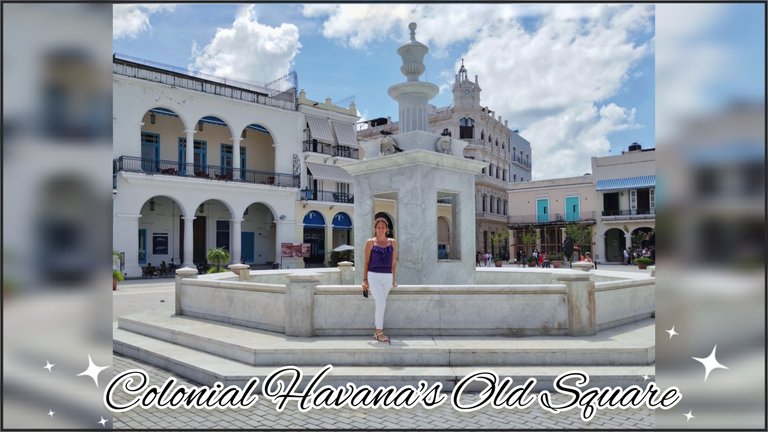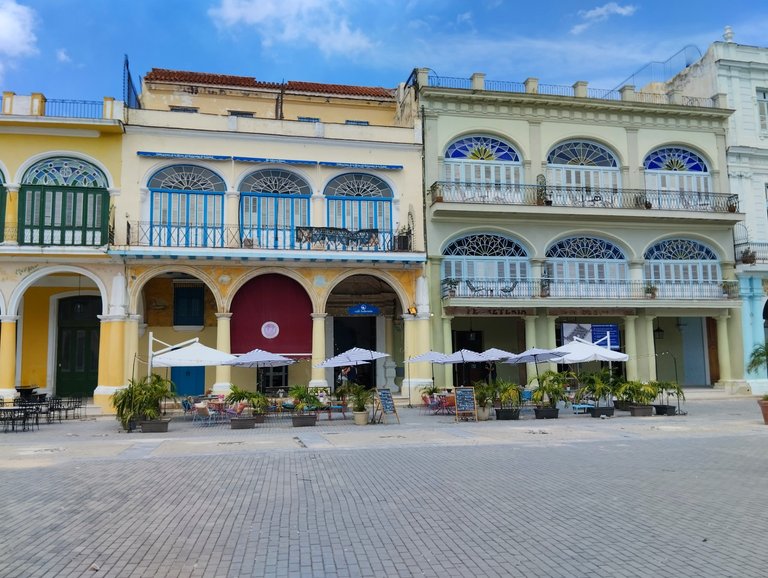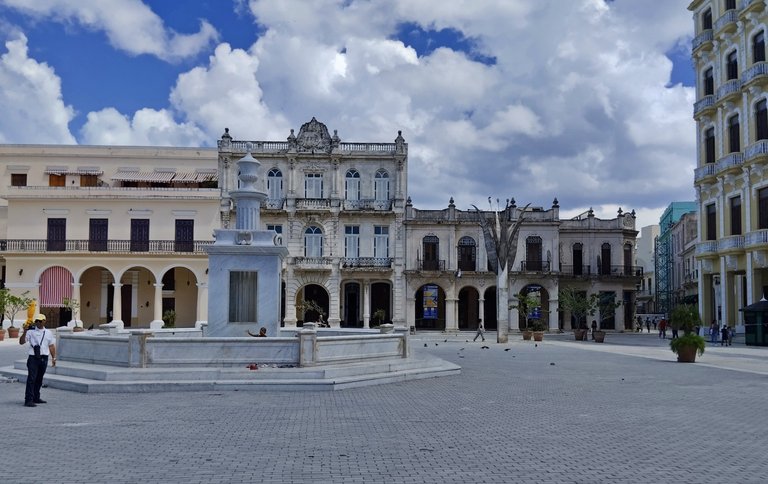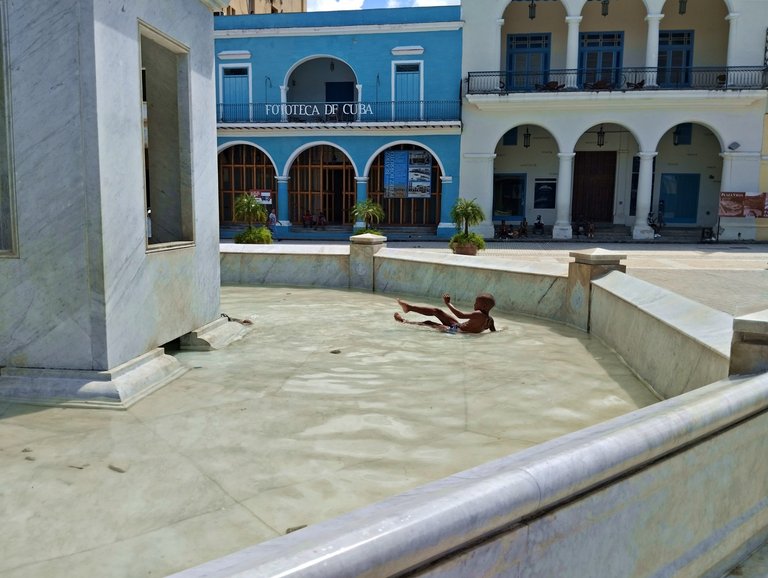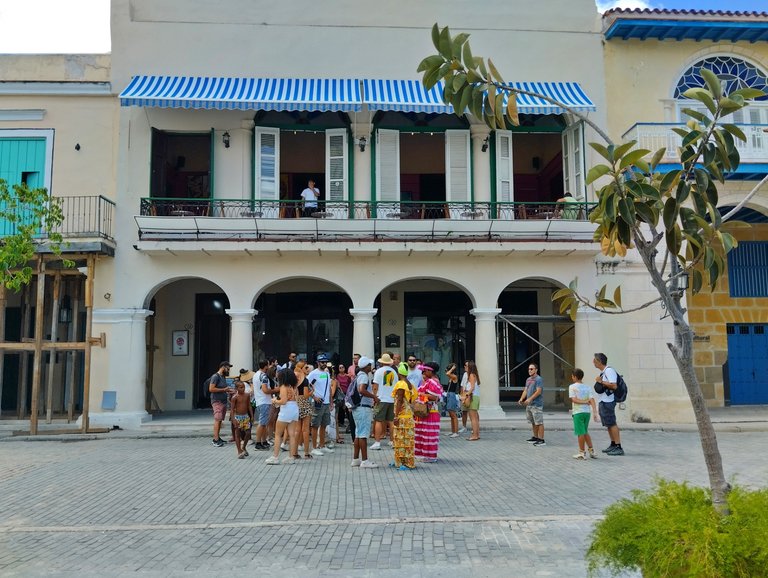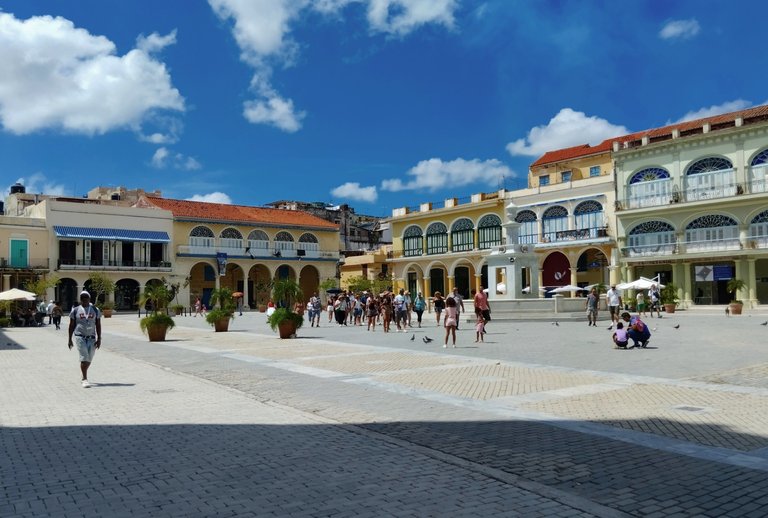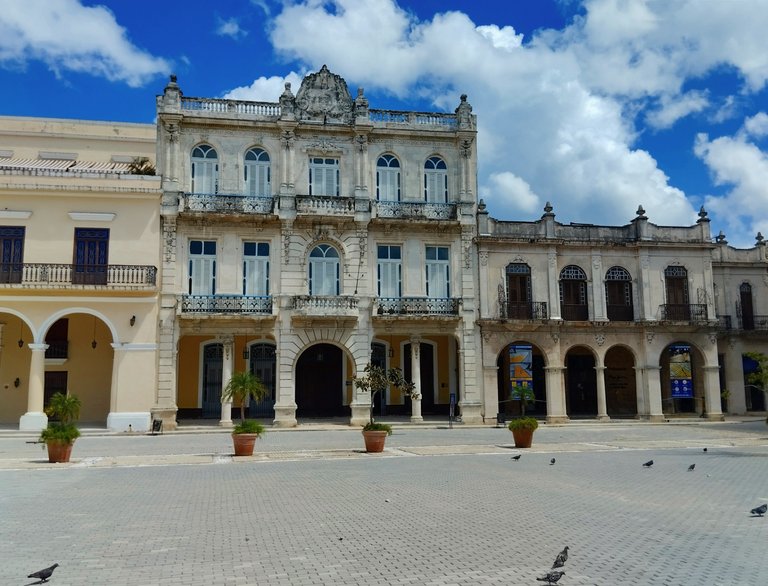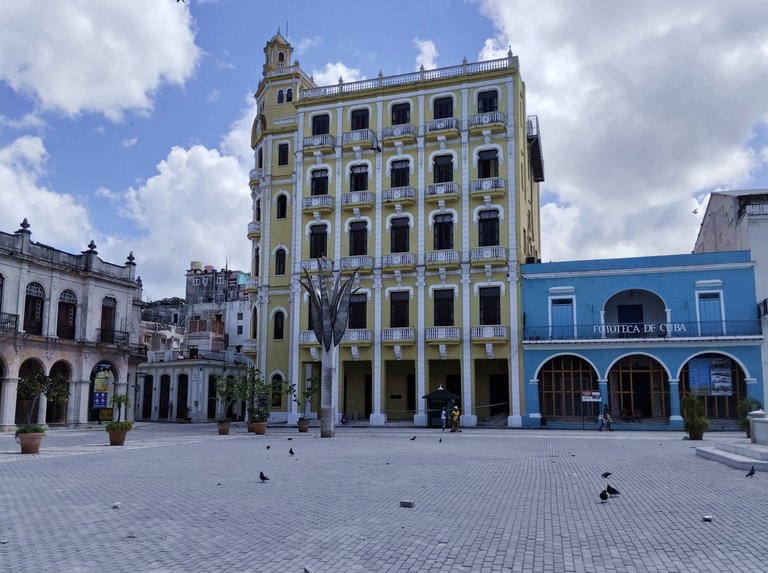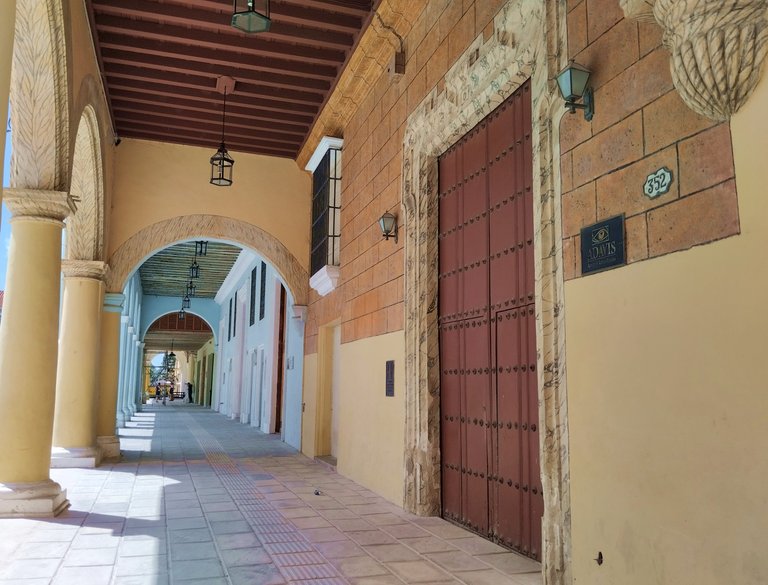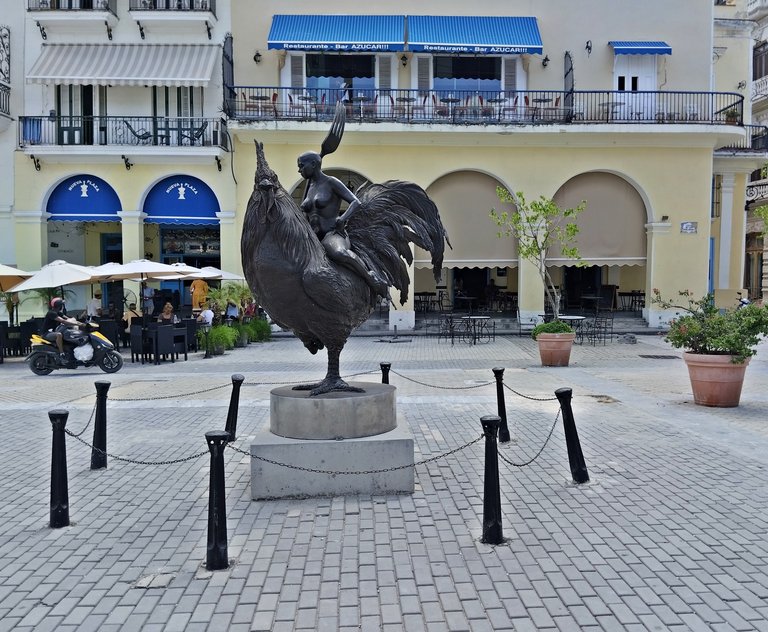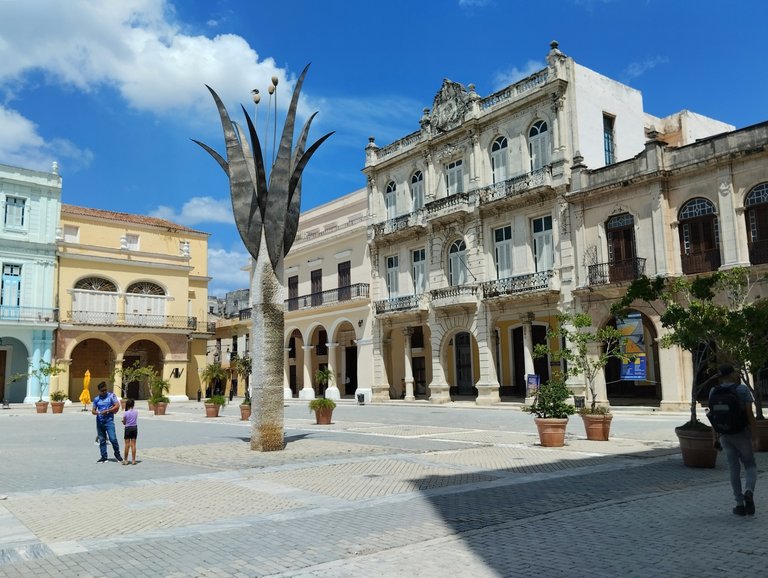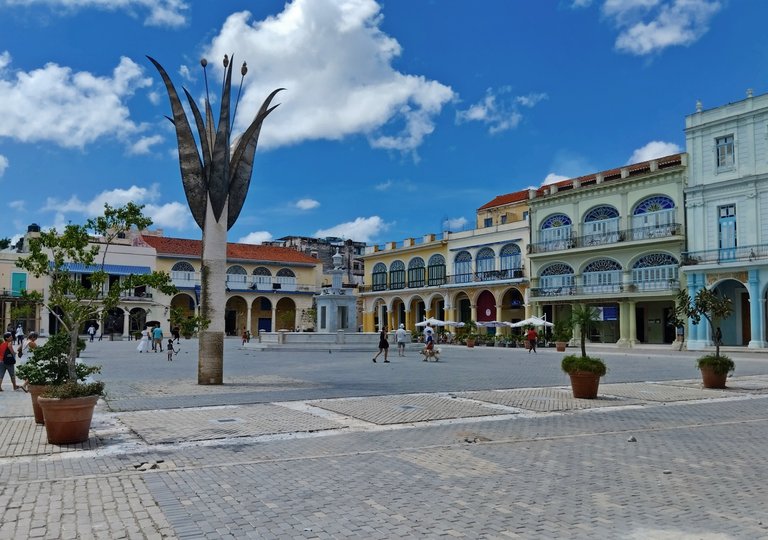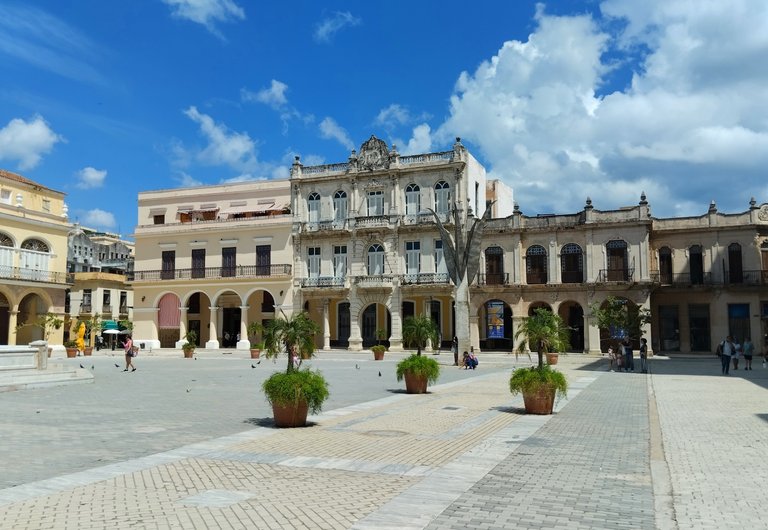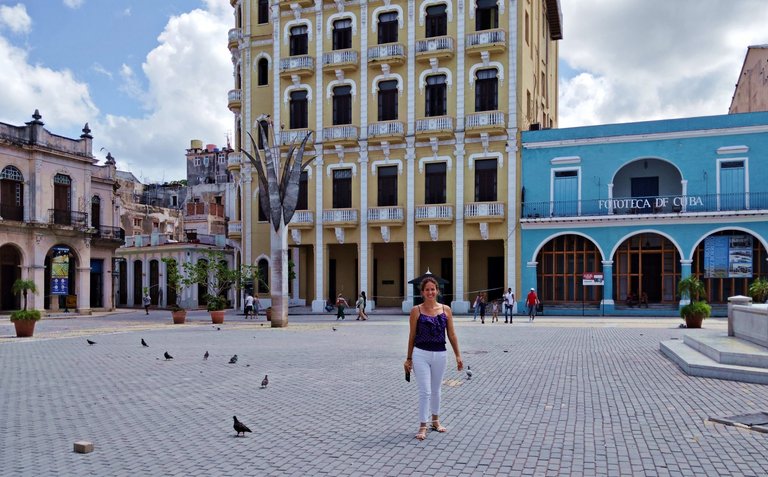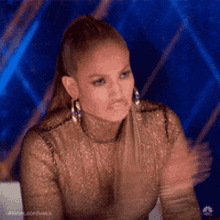English Version
Despite having visited Old Havana several times, there are always things that I missed. Even after having visited a place, I always leave with the feeling that I missed something. For example, in the Plaza Vieja (Old Square), a place I have visited several times, it was only on this last visit that I discovered the sculpture on one of the corners, a work by the renowned Cuban artist Roberto Fabelo.
It also happens to me that I perceive places differently each time, even if they are the same. In my memories they are never the same as in reality. On this occasion, here in the Plaza Vieja I found it different from my last visit, it seemed much bigger, perhaps because it was more desolate than I remembered and with fewer commercial establishments. In my memory, the cafes were more numerous and there was a constant coming and going of people. Now, most of them were empty, with many tables unoccupied.
In the centre is a large marble fountain, always surrounded by many pigeons. That hasn't changed. Although this time, in addition to the characteristic pigeons, there were children bathing in the fountain. This surprised me a bit because on other occasions the fountain was guarded by a person, once I was even scolded for sitting on the edge. But on this occasion there were just children having fun and cooling off from the midday heat. I thought it was fun, a bit of joy.
Although there were not as many people as I remember, it is common to see groups of foreign tourists with their guides who are in charge of telling them the history of the Square.
To narrate a little of the history of this square, it is a very old place and it was built in the times when Cuba was a colony of Spain. It is surrounded by several buildings made in different times, which were built as the development and city life was increasing, although different, all of them have the common characteristics of colonial buildings.
Currently all of them have been restored and look like new, with beautiful stained glass windows and facades of beautiful colors. Each one has its own characteristic architectural style. These large mansions were the homes of the wealthy Cubans of the colonial era.
But, as I mentioned at the beginning, here we also find some touches of modernity and art, and I am referring to the large sculpture of a large rooster and his horsewoman. The rooster is ridden by a woman holding a large fork in one of her hands. There is also another sculpture at the opposite end called ‘Natura’, which looks like a large flower growing on the pavement with its petals open.
I think this time I managed to capture most of the details of the Plaza Vieja (Old Square), although I always leave with the same feeling of having missed something. I'm sure it's a trick of my mind to make me go back. So I take in my memory another memory of the place, maybe a bit more desolate and lonely, but just as beautiful.
I hope you also enjoyed the walk and that you will be able to visit it sometime.
Versión en Español
A pesar de haber visitado varias veces La Habana Vieja, siempre hay cosas que se me pasan por alto. Incluso después de haber visitado un lugar me voy siempre con la sensación de que algo se me pasó por ver. Por ejemplo, en la Plaza Vieja, un espacio que he visitado en varias ocasiones, solo en ésta última visita fue que descubrí la escultura en una de las esquinas, una obra del reconocido artista cubano Roberto Fabelo.
También me sucede que percibo los lugares de manera diferente cada vez, aunque sean los mismos. En mis recuerdos nunca son iguales a la realidad. En esta ocasión, aquí en la Plaza Vieja la encontré diferente desde mi última visita, me pareció mucho más grande, quizá porque estaba más desolada de lo que recordaba y con menos establecimientos comerciales. En mi memoria, los locales gastronómicos eran más numerosos y había un constante ir y venir de personas. Ahora, la mayoría estaban vacíos, con muchas mesas desocupadas.
En el centro hay una gran fuente de mármol, siempre rodeada de muchas palomas. Eso si no ha cambiado. Aunque esta vez, además de las aves características, había niños bañándose dentro de ella. Esto me sorprendió un poco porque en otras ocasiones la fuente estaba custodiada por una persona, una vez hasta me regañaron por sentarme al borde. Pero en esta ocasión solo había niños divirtiéndose y refrescándose del calor del mediodía. Me pareció divertido, un poco de alegría.
Aunque no había tantas personas como recuerdo, si es común ver a grupos de turistas extranjeros con sus guías que son los encargados de contarles la historia de la Plaza.
Para narrar un poco la historia de esta plaza, es un sitio bastante antiguo y se construyó en los tiempos en que Cuba era colonia de España. La rodean varios edificios hechos en diferentes épocas, que se fueron edificando a medida que el desarrollo y la vida en ciudad iba en aumento, aunque diferentes todos ellos tienen las características comunes de las edificaciones coloniales.
En la actualidad todos han sido restaurados y lucen como nuevos, con hermosos vitrales y fachadas de bonitos colores. Cada uno con sus característicos estilos arquitectónicos. Estas grandes mansiones fueron las viviendas de los cubanos de la clase adinerada de la época de la colonia.
Pero, como comentaba al principio, aquí también encontramos algunos toques de modernidad y arte y me refiero a la una gran escultura de un gran gallo y su amazona. El gallo es cabalgado por una mujer que sostiene en una de sus manos un gran tenedor. También hay otra escultura en el extremo opuesto llamada “Natura”, que parece una gran flor que crece en el pavimento con sus pétalos abiertos.
Creo que esta vez logré captar la mayor cantidad de detalles de la Plaza Vieja, aunque siempre me voy con la misma sensación de haberme perdido algo. Seguro que es una trampa de mi mente para hacerme regresar. Así que me llevo en mi memoria otro recuerdo del lugar, quizá un poco más desolado y solitario, pero igual de bello.
Espero que también hayan disfrutado del paseo y que puedan visitarlo en algún momento.

